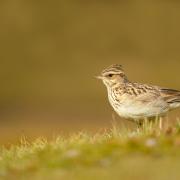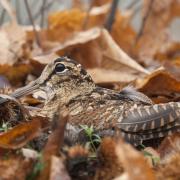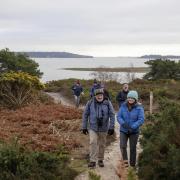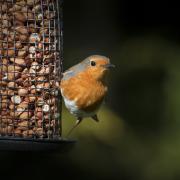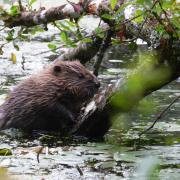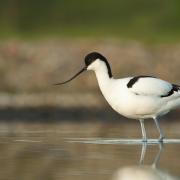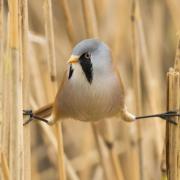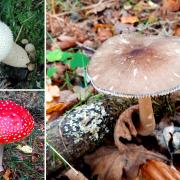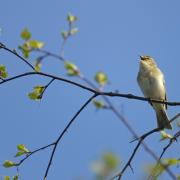A crisp winter’s dusk is the best time to see one of nature’s most spectacular displays - a murmuration of starlings. A beautiful and fleeting example of safety in numbers
Sometimes on a cold, dry winter’s afternoon, the sky may darken and the air is suddenly filled with a deafening chitter chatter. If so you will be observing one of wildlife’s most spectacular winter sights - a wonderful sweeping aerial display of a swirling flock of birds.
And the reason for this dramatic sight? Safety in numbers, says Dorset Wildlife Trust’s (DWT) bird enthusiast and Learning and Interpretation Officer for The Great Heath, Nicky Hoar. “A flock of birds is believed to deter predators, as it’s difficult to single out one bird. The sheer number of them is quite mesmerising and off-putting to a bird of prey.” Winter, she says, is a tough time for birds. “It’s all about survival - finding food sources and warmth. In a flock, birds can hunt for food together and stay warmer when they roost.”
Whilst birds’ movements are unpredictable and a roost site can often change, a flock can usually be seen at certain times of the day, as Nicky explains. “The best time to see a flock of birds, or in the case of starlings a ‘murmuration’, is about 4pm in the winter, just as it is getting dark. However, if the weather is poor they often go to roost straight away. One thing you will notice is the sudden silence as the birds fly into trees for the night. It can be quite eerie!”
The best places to see a flock will be near suitable roosting sites. Look for areas that are low down with lots of sheltering trees, reed beds, or even bamboo. Starlings are known to travel up to 20 miles from where they are in the day to join a night time flock. “It’s really amazing how they all know where to go at the same time,” says Nicky. “No one really knows why, but there’s clearly a social aspect in addition to survival, as the birds are chatting away to each other.”
In the past murmurations of hundreds and thousands of starlings were seen in cities and towns, but numbers have decreased dramatically each year since 1979. The reason for this is thought to include loss of habitat and food sources, so it’s important to support this declining species in your garden. “If you’ve got starlings nesting on your house then don’t disturb them, or if you have to, give them an alternative place to nest,” says Nicky, who also advises putting out bird feeder or fat balls. “Flying uses up a lot of their energy, so birds need to eat as much as possible to stay warm. Bird boxes will also provide the perfect shelter during harsher weather. I’ve seen pictures of small birds like wrens literally huddled together in a nest box for warmth during a cold snap.”
Unfortunately there are no guarantees of success when searching for a flock of birds or murmuration of starlings, even if you think you’re in the right place at the right time! “They do tend to come and go as they please,” says Nicky, “But this makes seeing this amazing sight even more special.”
***
READ ON
• Saving barn owls in Dorset - Could apartment living be the answer for these former barn dwellers? Join Dorset Wildlife Trust’s campaign to restore our beleaguered barn owls.
• Why 2014 was a year to remember for wildlife in Dorset - From battering storms and barrel jellyfish to an award-winning island and record flocks of spoonbills, Dorset Wildlife Trust’s Sally Welbourn reflects on 2014 - a year to remember.








